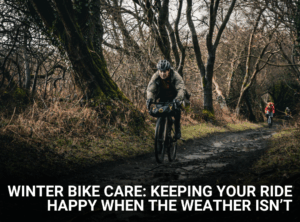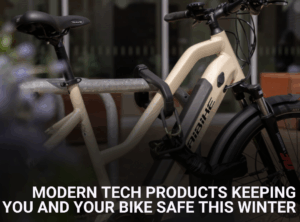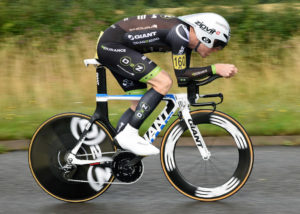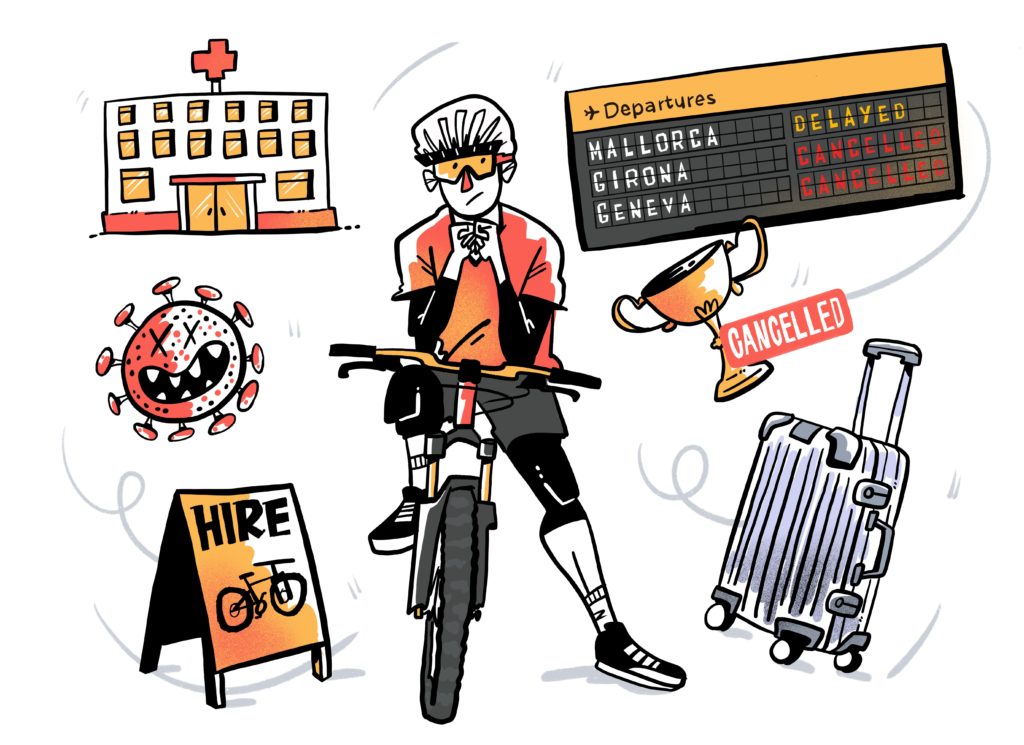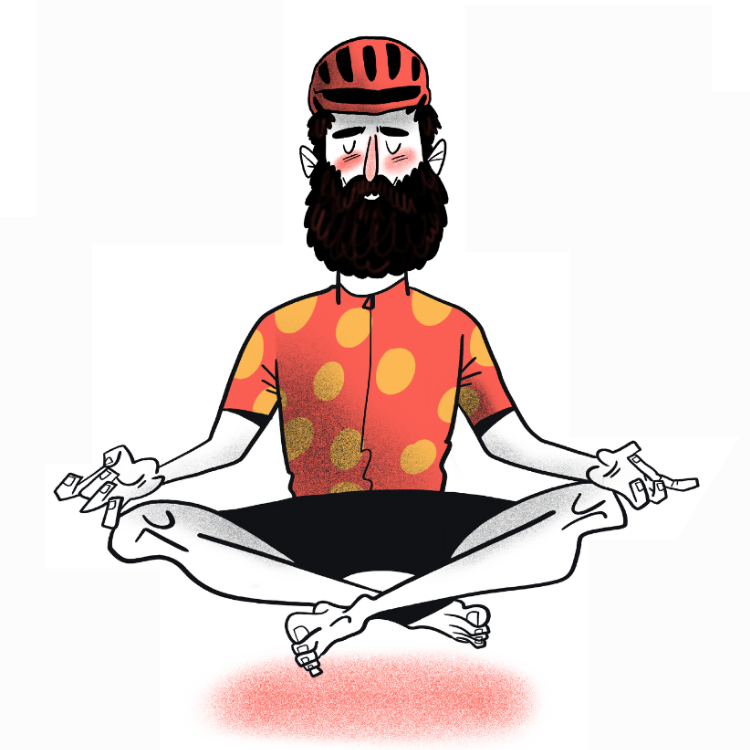If you watch any professional triathlon from the past year or so, you’ll likely notice many athletes with a small plastic, usually white, patch on their arms. This patch is probably monitoring an athlete’s blood glucose and is called a continuous glucose monitor (CGM). Regular monitoring of blood glucose is something that’s familiar to many people with diabetes as this metric is one of those that they need to keep an eye on. Like anything though, elite athletes have found a use for monitoring this too. Remember, once upon a time heart rate monitoring was the preserve of hospitals. In the same way as body temperature has been hacked, with sensors from companies like CORE, glucose is also being taken advantage of.
What is glucose and why should we monitor it?
Glucose gives us energy. The word glucose originates from the greek word for ‘sweet’ and it’s a type of sugar. Your body uses this sugar to provide energy for various functions and transports it around in your blood. The amount of glucose in your blood is what a CGM monitors. This level of glucose is difficult to regulate for people with diabetes. Back in February, the Yellow Jersey blog caught up with Team Novo Nordisk, a professional cycling team for riders with diabetes. If anyone knows about the power of monitoring their glucose, it’s these guys!
Glucose mainly comes from foods that contain a lot of carbohydrates – sugary snacks will lead to a spike in blood glucose. Ideally, the amount of glucose in your blood remains relatively stable. Lots of things can provoke a dip or spike in glucose, however, so keeping it stable is not always easy or possible – even for those of us without diabetes. Monitoring glucose is useful, as we can build an association between what (and the amount) that we eat, our food intake and our energy levels.
What did I learn from wearing a CGM?
Recently, I’ve been lucky enough to try out one of these CGMs and found that I learned quite a lot from it. I’d been eager to try one ever since seeing the top athletes at Kona with them! Previously, cost prohibited me from this but now I’ve got one to try out. Application of the CGM is interesting. You get a stamp like device which you insert the sensor into, stab yourself in the arm with a needle that leaves the sensor in there and throw away the packaging. Despite the fact that you do have to inject yourself, the process is pretty much painless. Once the device is inserted, it’s relatively pain free.
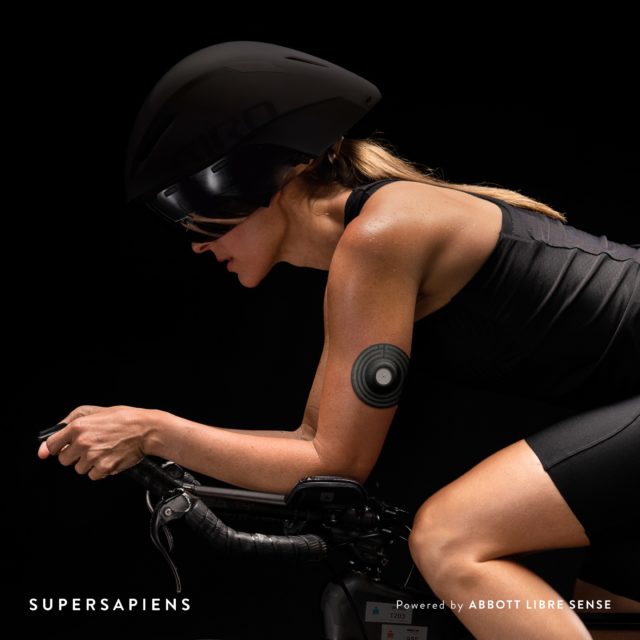
Before CGMs, if you wanted to monitor your blood glucose you needed to use a pin-prick blood test. If you have to do this multiple times during the day, you’ll likely find yourself in a spot of pain. CGMs are painless in my experience though other users have reported site infections and itchiness.
I have never monitored my blood glucose before, so the CGM was a complete ride for me. It led to some very interesting things and a couple of key takeaways.
In summary, this is what I learned from my time with the CGM…
You don’t actually need one
Many athletes understand that they need to eat enough, eat regularly during long sessions and eat lots before and after. The CGM did not actually change that understanding at all and it provided almost no ‘in-training’ insights. Large dips in glucose when I didn’t eat soon enough after training reinforced the notion that I need to eat soon after finishing. This, I already knew but it was interesting to have concrete evidence that I was damaging my recovery when I didn’t do the simple things right.
All sorts of things can spike or stabilise your glucose
The day I first got my CGM, I went on a long drive. This time spent sitting still in the car for hours caused my blood glucose to go through the roof (and I can’t imagine the jelly babies helped all that much either). Waking up, even before I eat, I usually see a rise in glucose. In general, going for a pre-dinner short walk causes my post dinner spike and crash to be far less severe and, on heavy training days, I find myself much more susceptible to heavily fluctuating glucose. Other things, like apple-cider vinegar and coffee can reduce the post meal glucose spike too.
My mood often depends on my glucose, or my glucose depends on my mood?
I’m not really a moody guy, but on the rare occasion I’ve found myself in a bad mood I’ve noticed that I’m suffering from low glucose. The idea of “hangry” appears to be a real thing. For the uninitiated, “hangry” is an amalgamation of “hunger” and “angry” and describes the feeling of being upset due to lack of food. My CGM has shown that I am, apparently, a sufferer of such an emotion. Using a CGM to monitor glucose and tracking your moods is interesting, especially if you’re someone that suffers from mood swings.
The CGM has shown me that all the things I know to be the right things are the right things. We all know that we need to fuel sessions with carbohydrates before, during and after. If we don’t do this, our muscles cannot get the energy to repair and adapt after the training. This energy is obtained from glucose. If there’s no glucose, there’s no repair. You need to do all the things you know to do already, the CGM shows you that each time you don’t do this, there’s real consequences. Putting the expense aside, if you can get a CGM to use, I’d recommend it. You don’t particularly need one, but it can provide you with some extremely valuable insights and helped me figure out why I was feeling certain ways.

